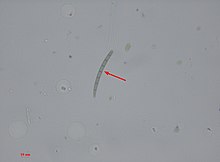This is an old revision of this page, as edited by Citation bot (talk | contribs) at 16:20, 8 July 2019 (Alter: first. Add: date. Removed URL that duplicated unique identifier. | You can use this bot yourself. Report bugs here.| Activated by User:Headbomb). The present address (URL) is a permanent link to this revision, which may differ significantly from the current revision.
Revision as of 16:20, 8 July 2019 by Citation bot (talk | contribs) (Alter: first. Add: date. Removed URL that duplicated unique identifier. | You can use this bot yourself. Report bugs here.| Activated by User:Headbomb)(diff) ← Previous revision | Latest revision (diff) | Newer revision → (diff)| This article needs additional citations for verification. Please help improve this article by adding citations to reliable sources. Unsourced material may be challenged and removed. Find sources: "Paraphyses" – news · newspapers · books · scholar · JSTOR (September 2018) (Learn how and when to remove this message) |

Paraphyses are erect sterile filament-like support structures occurring among the reproductive apparatuses of fungi, ferns, bryophytes and some thallophytes.
In certain fungi, they are part of the fertile spore-bearing layer. More specifically, paraphyses are sterile filamentous hyphal end cells composing part of the hymenium of Ascomycota and Basidiomycota interspersed among either the asci or basidia respectively, and not sufficiently differentiated into specialized, swollen, often protruding cells to be called cystidia. The tips of paraphyses may contain the pigments which colour the hymenium.
In ferns and mosses, they are the filament-like structures that are found on sporangia. They are found between clusters of archegonia and antheridia.
References
- 1956-, Petersen, Jens H. (2013-04-21). The kingdom of fungi. Princeton, New Jersey. ISBN 9781400846870. OCLC 840416182.
{{cite book}}:|last=has numeric name (help)CS1 maint: location missing publisher (link) CS1 maint: multiple names: authors list (link)
This mycology-related article is a stub. You can help Misplaced Pages by expanding it. |